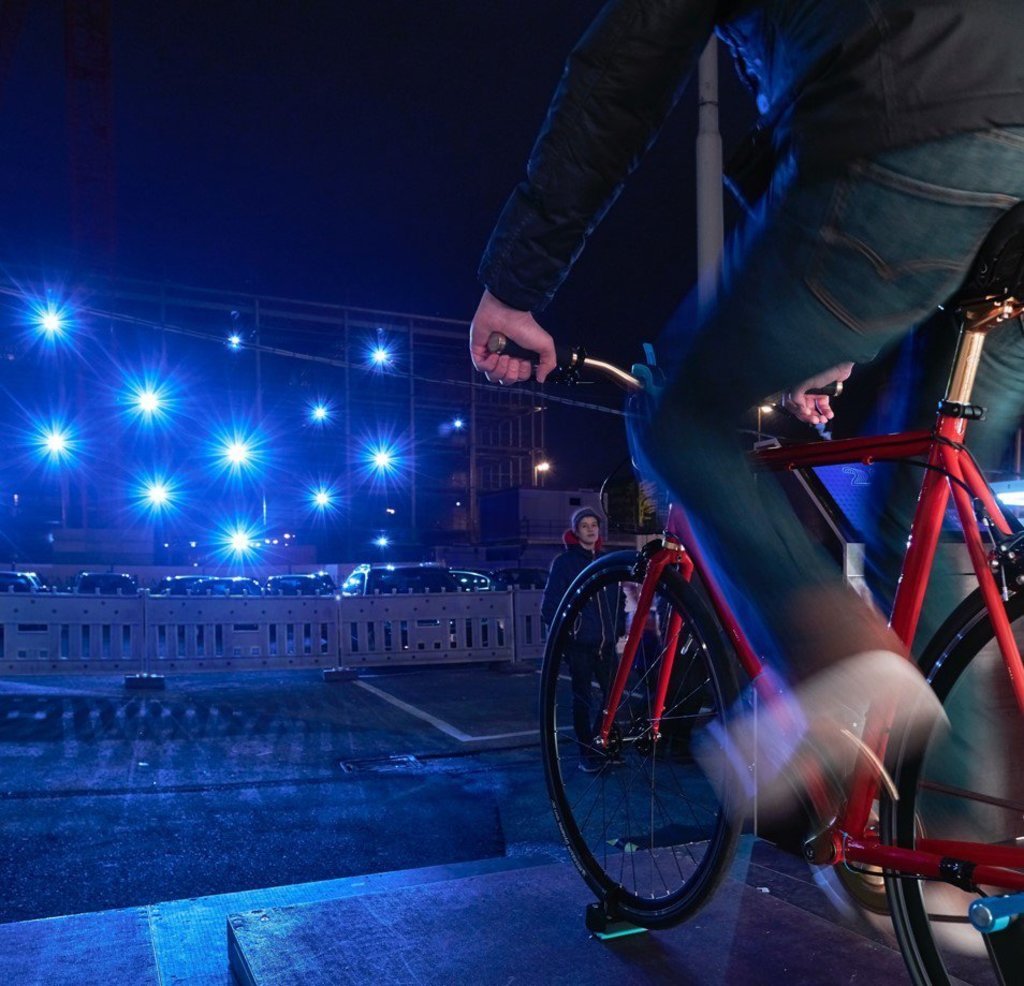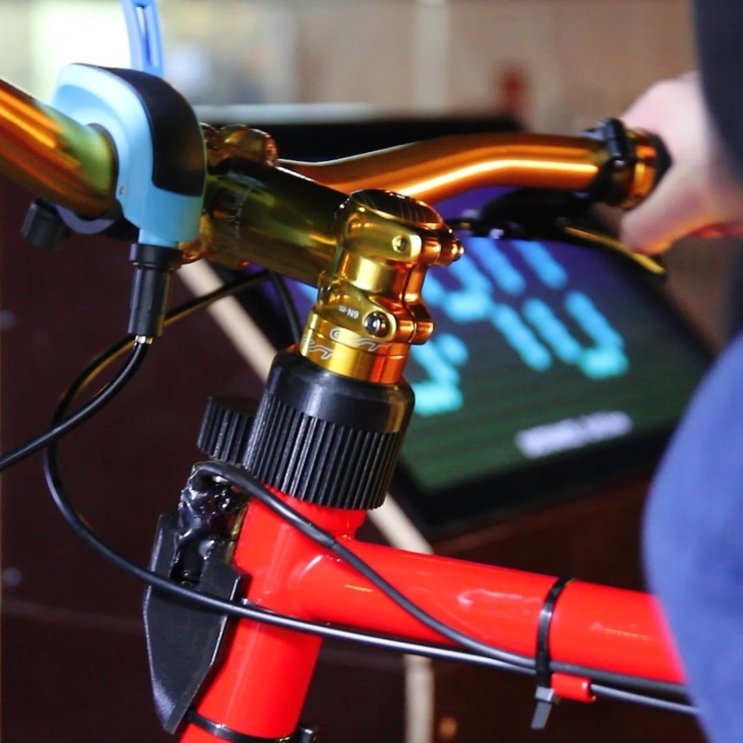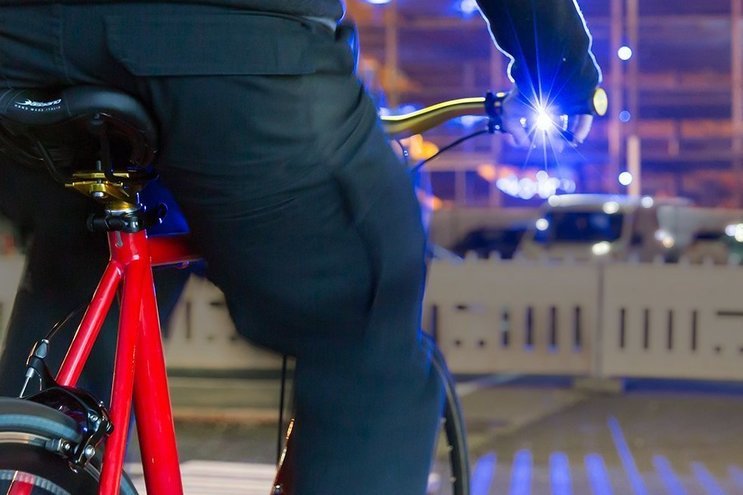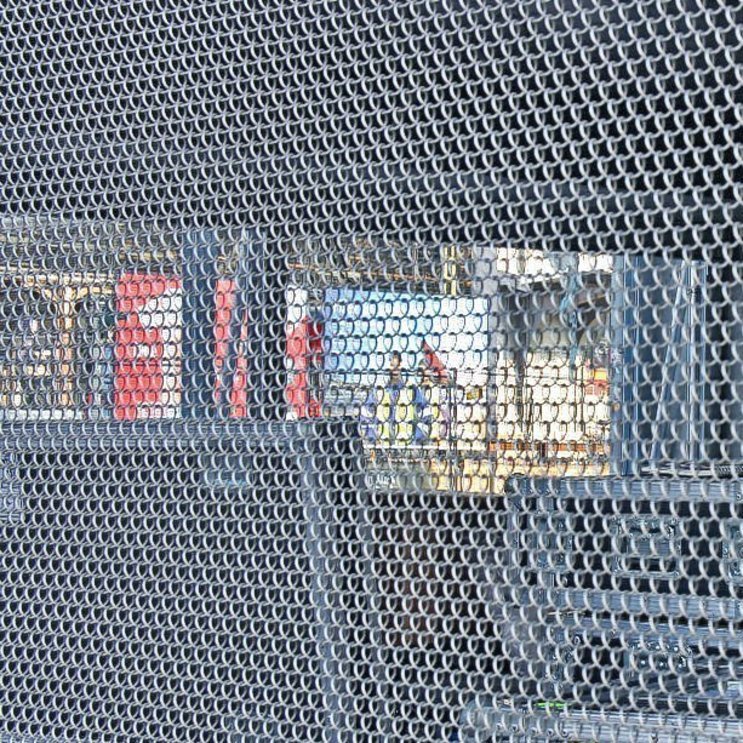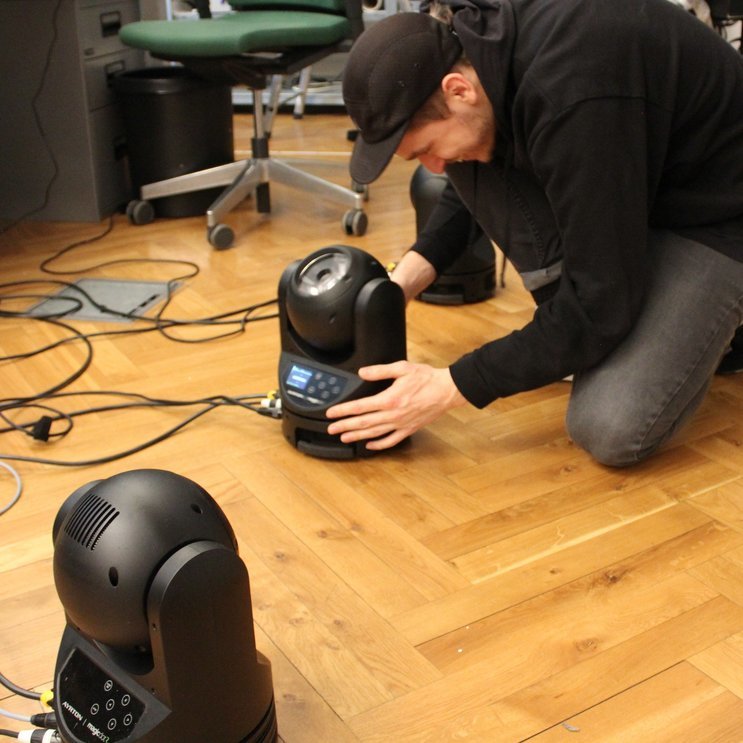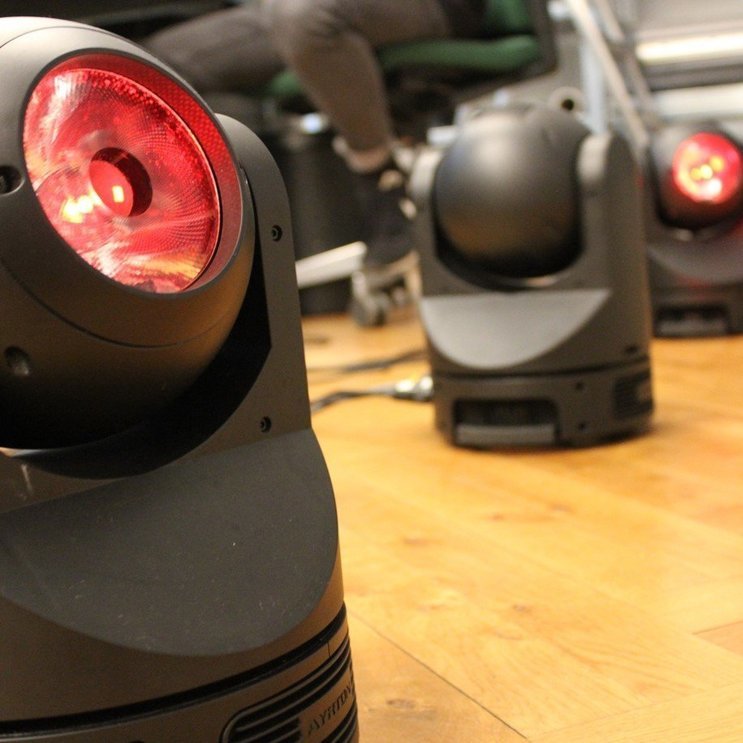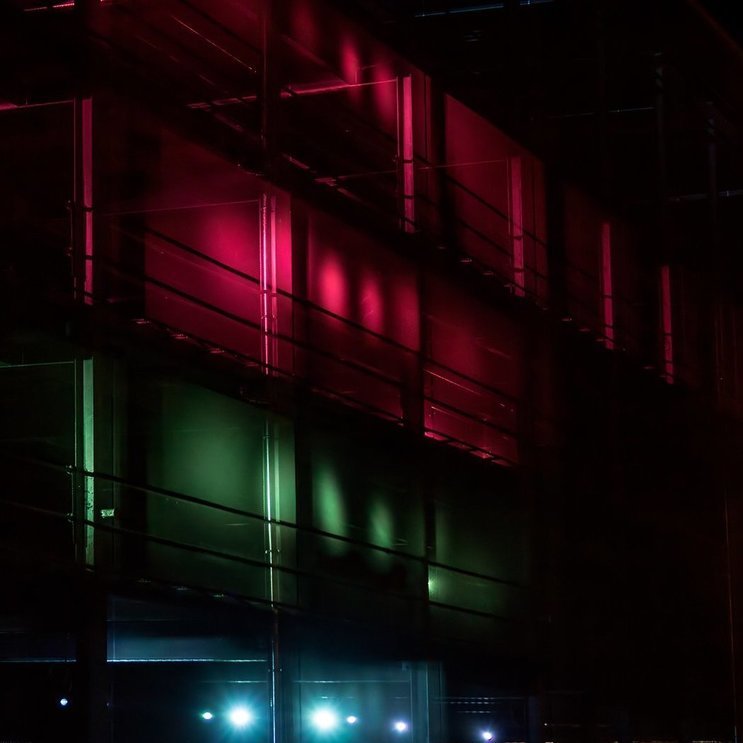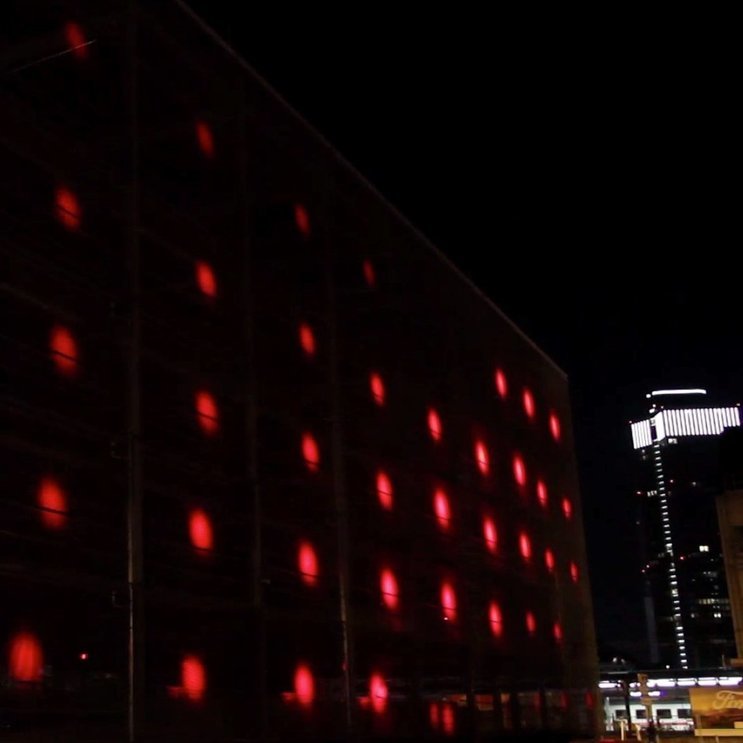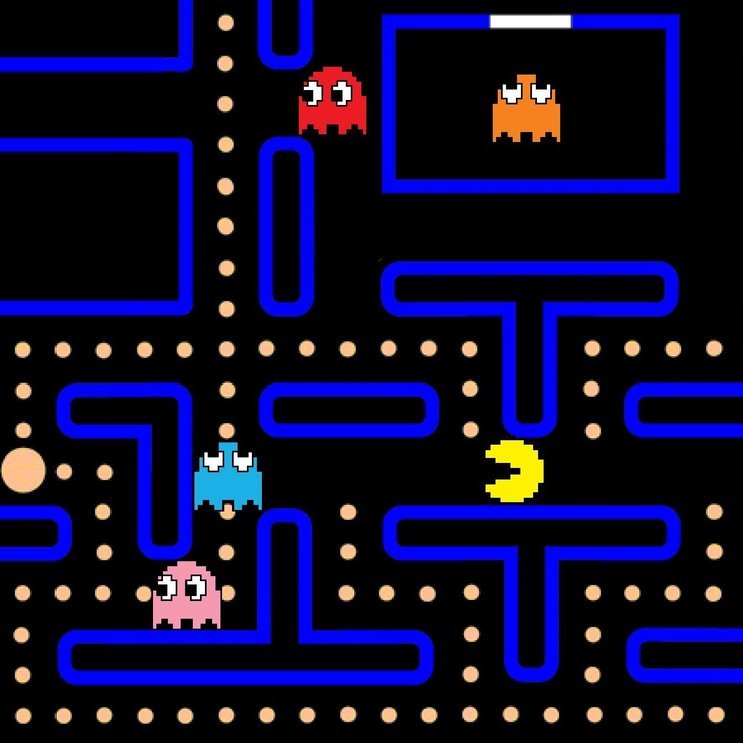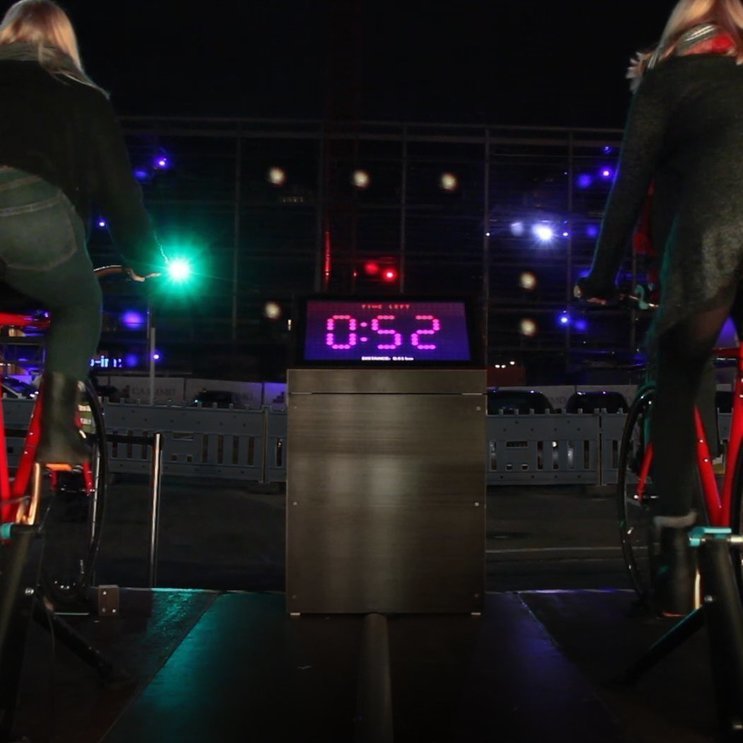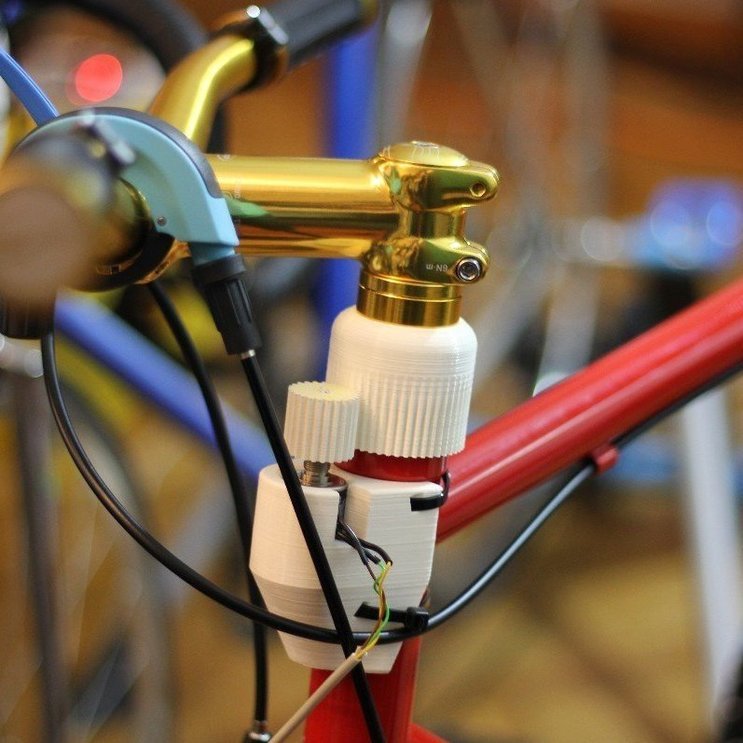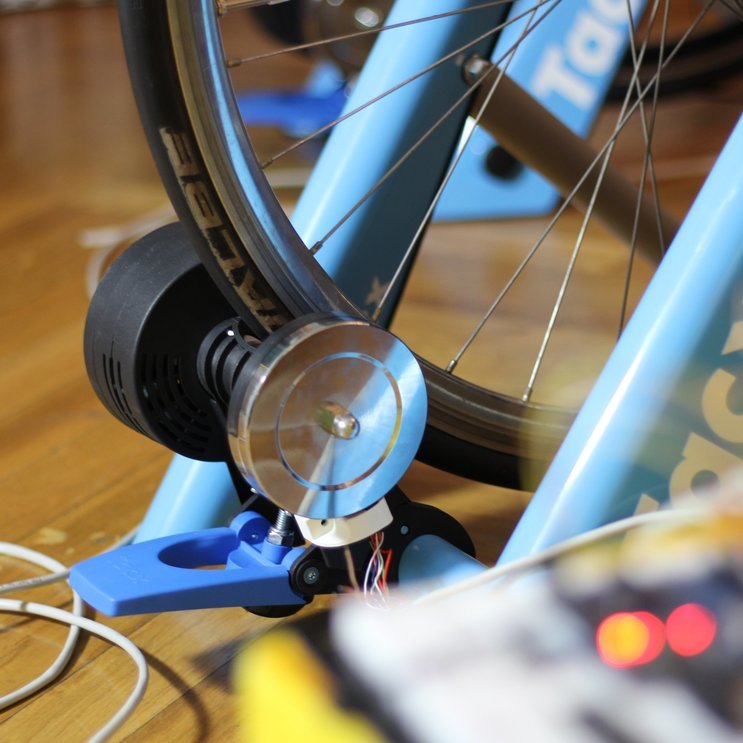In cooperation with schneider+schumacher, we staged and designed an interactive installation for CA Immo during the 2016 Luminale light festival. A game invites visitors to compete against each other on two stationary bicycles. The game world was projected in real time with 100 motor-controlled floodlights onto the architectural facade of a newly opened parking garage containing Frankfurt’s first bicycle parking garage.
From briefing to biking
Integral process allows for bold idea and full service
We had creative and technical oversight on the project and discovered early on that the facade of the parking garage could be used as a crowd puller. The facade is visible from the main road leading past Frankfurt’s main train station.

In order to present the new bicycle parking garage to the public, we suggested an interactive game with real bicycles. The facade of the bicycle parking garage would serve as a huge artificial playing field, actively engaging Luminale visitors.
The architects were immediately thrilled by the idea because of its urban appeal. The performative quality of the concept also played nicely into “Urban Benchmarks”, the slogan of our client CA Immo.
We thus transformed the formal briefing into a communication tool that lived up to its architectural potential and could effectively be used for marketing purposes.
Smart lightning system
Technical research enables for kinetic system
Bringing the semi-transparent hull of the building, which consists of coarse steel mesh, to life was a challenge. Mapping with conventional projectors would have required costly equipment.
We therefore evaluated moving lights with extremely high luminosity as a cost-effective alternative. When deployed intelligently, their ability to be kinetically controlled brought exciting possibilities for pushing the architecture of the building into the limelight.
We developed a smart “light render engine”, which merges the many individual points of light into an interactive composition.
Each spotlight was separately controlled. Through rotation, movement, brightness, and scattering angle, we positioned highly precise light that was broken and reflected by the mesh onto the facade.
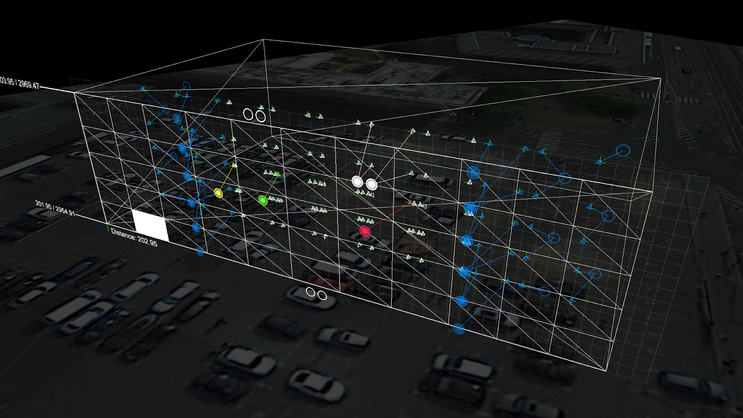
Light effects required by the game world, such as cross-fades from one light to another and from one story of the parking garage to another, were automatically and seamlessly calculated.
The algorithm allows for multiple creative scenarios. For symbolic content like a numeric countdown we used sharp light points as a pixel grid. Atmospheric light on the stories emphasized the building’s geometry.
At the same time, the 3D algorithm ensured that the neighboring houses were not disturbed by glare, thereby reducing urban light pollution.
Bespoke Game Design
Interactive Experience for Public Festival Audience
We sought inspiration for the game concept from the design of classic 8-bit games. Rules that are quickly understood and intuitive controls ensure that all players equally enjoy the game.
The rules are simple:
Two players each sit on bicycles. For the duration of three minutes they must each evade obstacles and gain valuable points. The player with the best score wins. A control monitor shows the remaining time and each player’s score.
The physical interfaces for real-time control were developed by us in a prototyping process in our electronics workshop.
The bicycles’ tires are mounted on bike trainers, allowing the pedaling speed to be captured. The direction of motion is established by a sensor integrated into the handlebar.
The biking data flows into our specially programmed game engine software and which controls the LED spots. Eventually the facade is bathed in a diffuse light to form a virtual game world while avatars, obstacles, and points move on this background as colored light points.
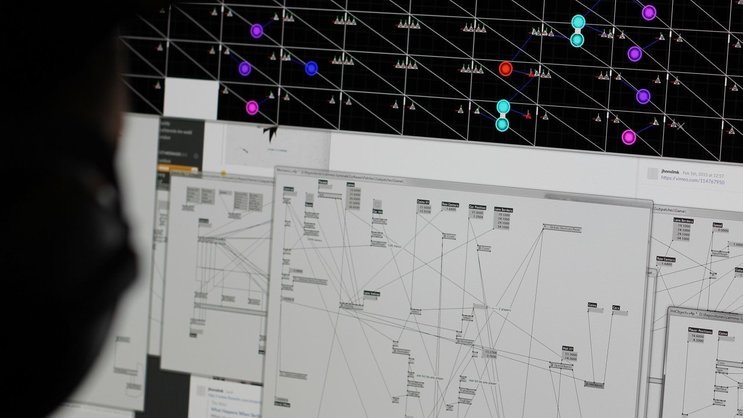
Making-of
Behind the scenes


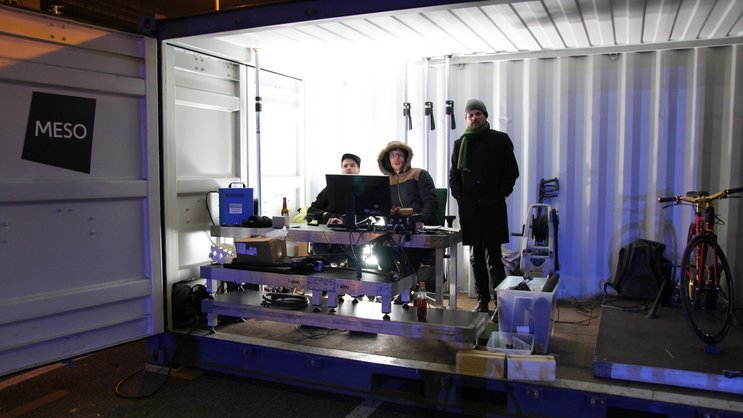

Curious about our approach? Feel free to get in touch!
Sebastian Oschatz Partner +49 69 24 000 321 sebastian.oschatz@meso.design sebastian.oschatz@meso.design +49 69 24 000 321
MESO Digital Interiors GmbH
Gutleutstr. 96 . 60329 Frankfurt . Germany
Team
Johannes Lemke, Theron Burger, Aeneas Stankowski, David Rittershaus, Alexander Graf, Sebastian Quader, Sebastian Kujas, Philipp Lorenz, Klaus Texter, Constantin Urban, Pia Scharf, Georg Kast
